As soon as I arrived at my sister’s house she revealed that there was an estate sale across the street. “Let’s go,” she suggested and I quickly followed her pied piper-like, across an overgrown front yard of a charming farmhouse. Since the sale started yesterday, she cautioned that there might not be much left. Little did we know that it was the house itself that was the real treasure.
The homeowner, an artist who had lived in the farmhouse for decades, decorated her home by exuberantly, hand-painting original designs on all the surfaces. Painted birds and foliage of various kinds adorned the cream-colored risers of the stairs, and an array of porcelain urns containing delicate sprigs of greenery marked the incline of the adjacent wall. Vines trailed just below the ceiling of the kitchen. Dining room walls had cross-hatching in a red and green diamond pattern while lemon trees in full fruit sprouted on nearby sea foam colored cupboards. An inset porcelain frieze, evoking Delft tile, contrasted with the otherwise deep-red painted fireplace. Her artist’s studio featured a playful medley of gold and blue polka dots, sprayed across the walls. My eyes popped wide open at this American version of Charleston, the farmhouse in Sussex England which embodies the Bloomsbury look, a decorating style that has captivated artists and designers for decades for its all-over, freewheeling, hand-painted motifs.
Charleston was the home of artists Vanessa Bell and her partner Duncan Grant who moved there in 1916. Bell said of the prospect of living in Charleston that “It will be an odd life but … it ought to be a good one for painting.” And it was. Although the palette and designs throughout the home are emblematic of the artists’ individual works-on-canvas, both painted much more than just canvases. Nearly every other surface in the house, including the walls, bookcases, beds, lamps, tabletops, fireplaces and doors, team with vibrant color and pattern. Charleston was a revolutionary effort to “muddy” the line between decorative and fine art. I have long wanted to see it first hand.
Vanessa Bell and Duncan Grant were part of a bohemian coterie of likeminded artists, writers and intellectuals who met regularly in the Bloomsbury neighborhood of London in the early 1900s. Other members included Vanessa’s sister, Virginia Woolf and her husband Leonard Woolf, Vanessa’s husband Clive Bell, Roger Fry, John Maynard, and Lytton Strachey. Intimately intertwined— professionally and personally—they became known as the Bloomsbury Group, which also lent its name to the decorating style. All Bloomsbury members either lived at Charleston at some point or visited there. As the writer Dorothy Parker once said of the group, they “lived in squares, painted in circles, and loved in triangles,” neatly summing up both domestic life at Charleston and its legendary decor.
Just as putting on a “natural face,” can require layers of carefully applied make up, Vanessa Bell’s granddaughter Cressida Bell (herself a successful decorative artist and painter) notes that the Bloomsbury look “takes a huge amount of skill, discipline and practice to create that kind of effortless aesthetic…” Her remark offered a word of caution against any attempt at direct imitation. Yet her words haven’t stopped many from drawing upon Charleston’s inspirational spirit and style. Rooms, wallpaper and fabrics that reference the Bloomsbury look proliferate. The textiles at Spoonflower are fun, and for wallpaper, check Schumacher. Decorative and interior design leaders Molly Mahon and Beata Heuman have both used Bloomsbury-like patterns in their own homes.
In addition to the Maryland farmhouse, I have stumbled upon several other Bloomsbury interiors. The film maker James Ivory’s home in Hudson, NY (first photo) has a room with floral decoration that recalls Vanessa Bell’s flower paintings. I also saw a dining room by Kit Kemp created in homage to Charleston for the 2024 Kips Bay Show House in New York City. Kemp commissioned decorative artist Tess Newall, whose aesthetic is sympathetic to the style, to complete the murals. If you keep your eyes open, you will see Charleston’s impact on design everywhere.
The artist who devised the sweet farmhouse in Maryland had both expertise and a singular vision. Although she may have known about Charleston (wish I could have asked her), not a single creation in her home was a copy of it. Her work is executed more tightly and has a different palette than the painted flourishes there. Nevertheless her uniqueness aligns her farmhouse ever more closely to Bloomsbury ideals since nothing is more Bloomsbury than an untethered expression of originality.
Bon voyage,
Lynn
PS: In addition to the amazing surroundings, the estate sale was packed with well-priced goodies and, given my sticky fingers, I did not leave empty-handed. Scroll to the bottom for a snap of this girl’s latest thrift haul.
Images
Here are some photos of Charleston for reference. More here. And here. First photo by Paul Massey for UK House and Garden. Second and third photos by Penelope Fewster.
Detail from a favorite painting of mine by Vanessa Bell, The Other Room, (late 1930s).
The Maryland Farmhouse with a crowded estate sale in progress.
Kit Kemps’ room at the 2024 Kips Bay Show House in New York City. Murals painted by Tess Newall.
The fireplace at Molly Mahon’s home in Sussex England. Photo by Owen Gale.
Beata Heuman’s Riverside home from her website.
A Bloomsbury-like cabin bed painted by Tess Newall via UK House and Garden.
And because I know you want to see it, here is my haul from the estate sale. I have been happily coddling eggs with the Royal Worcester egg coddlers ever since.
Credits: Unless otherwise noted, photos are by Lynn Byrne.





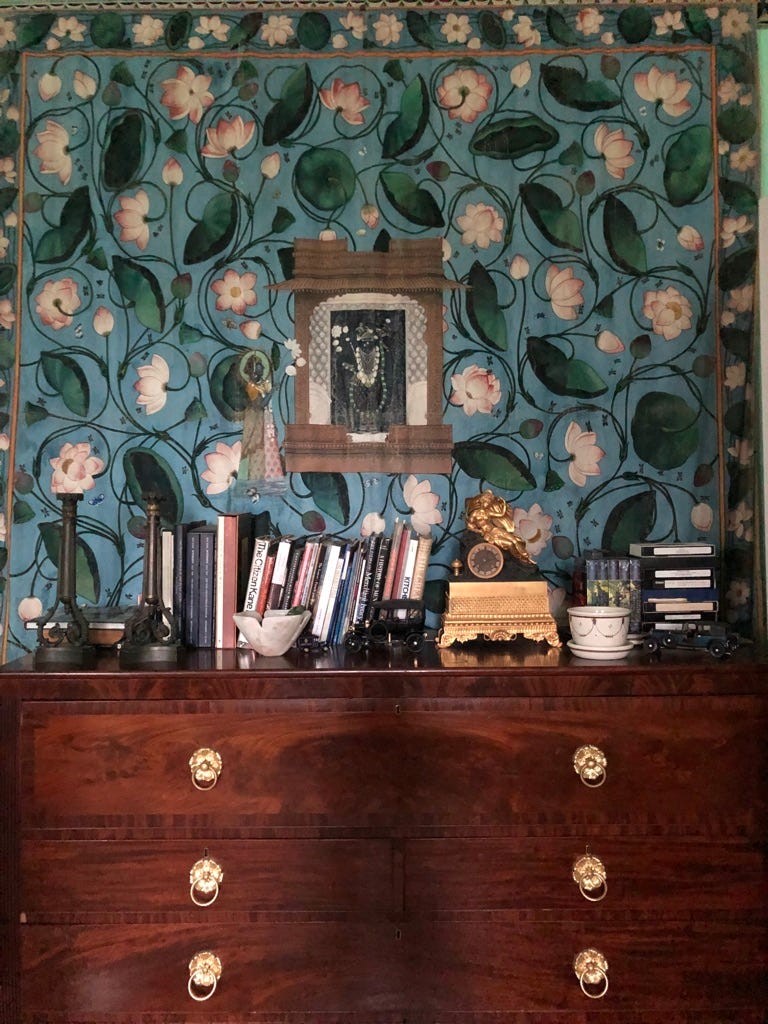
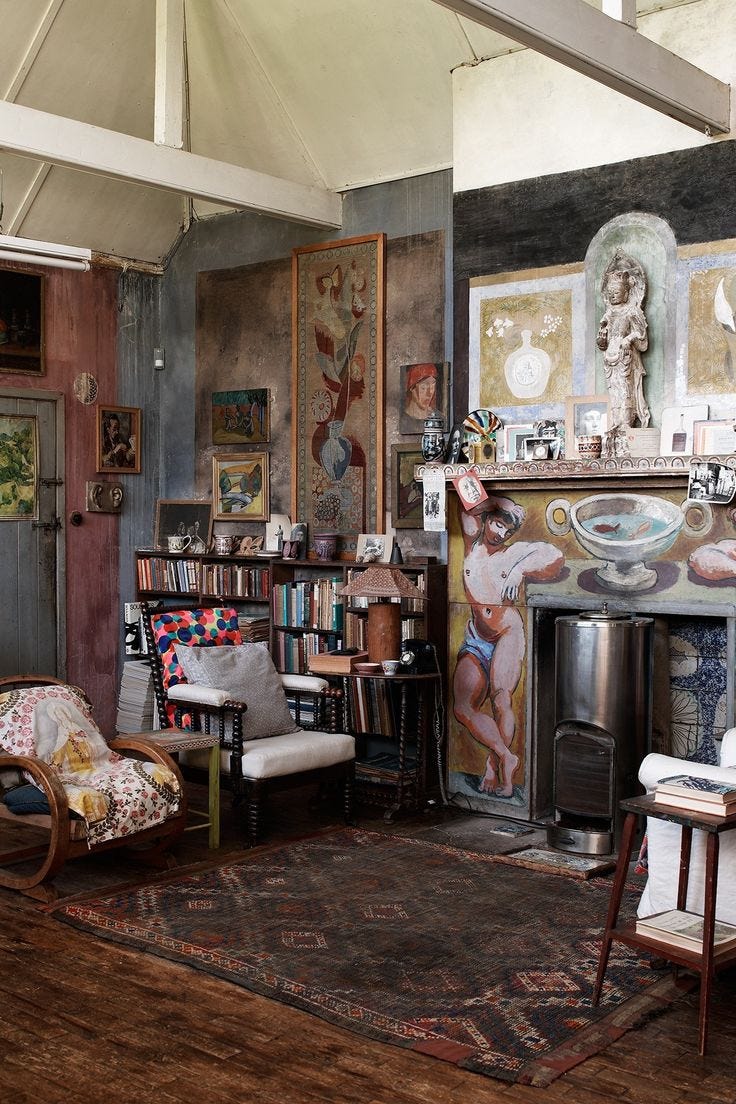

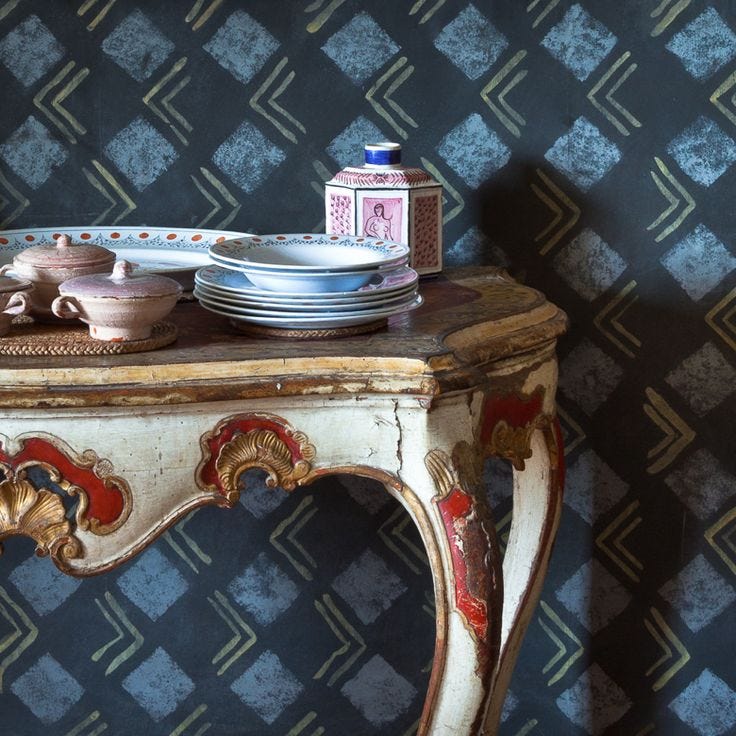
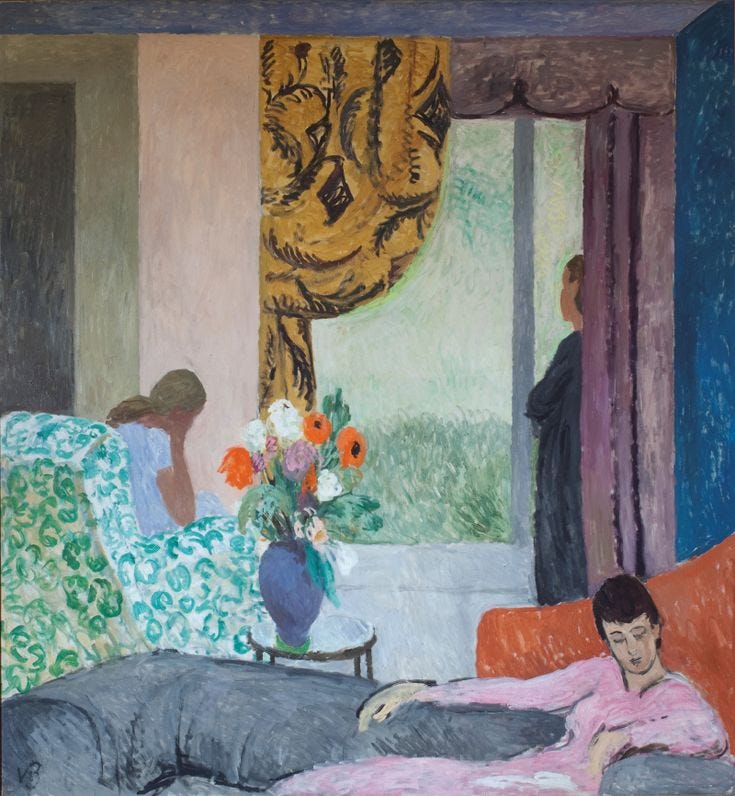
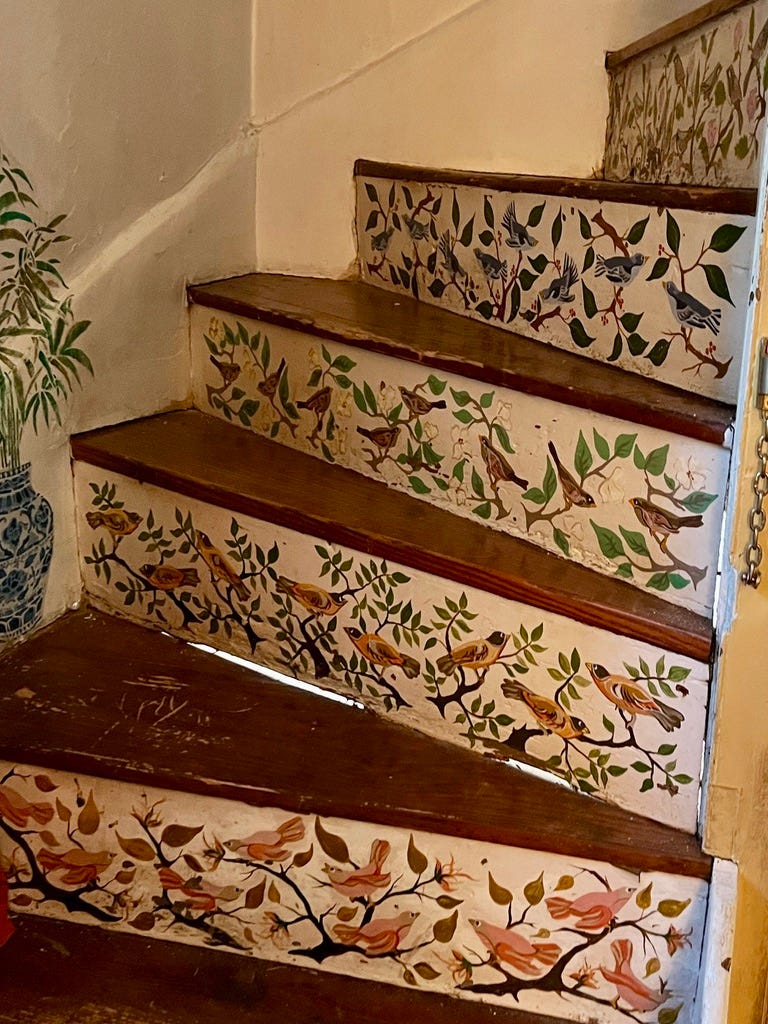
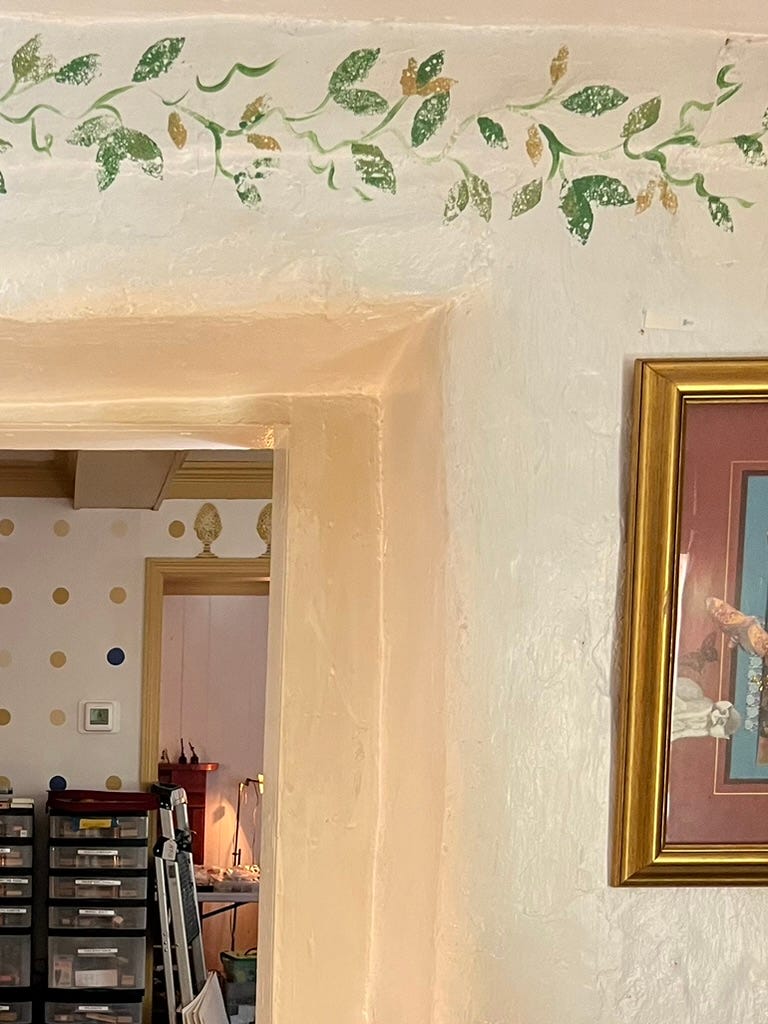
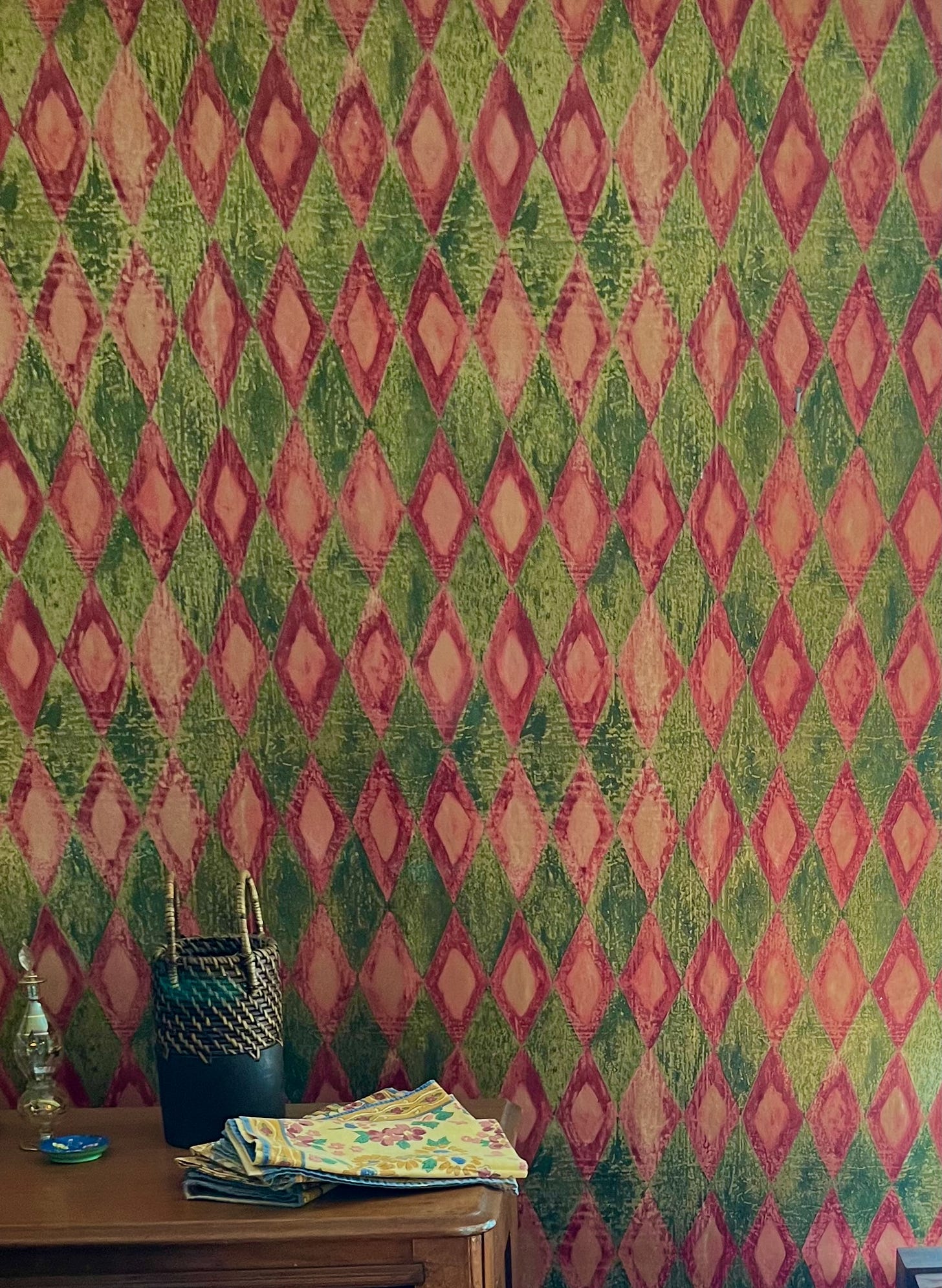
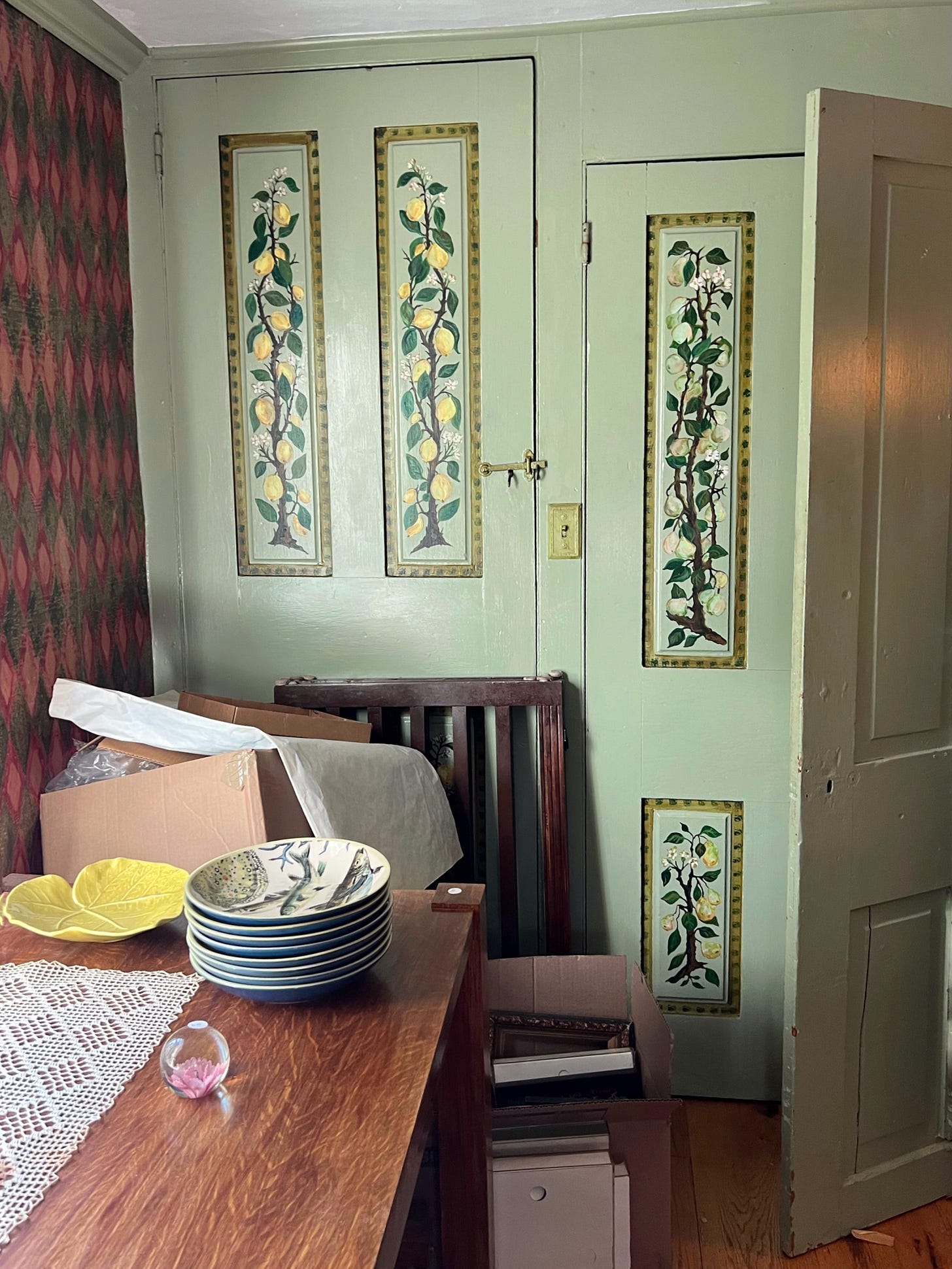

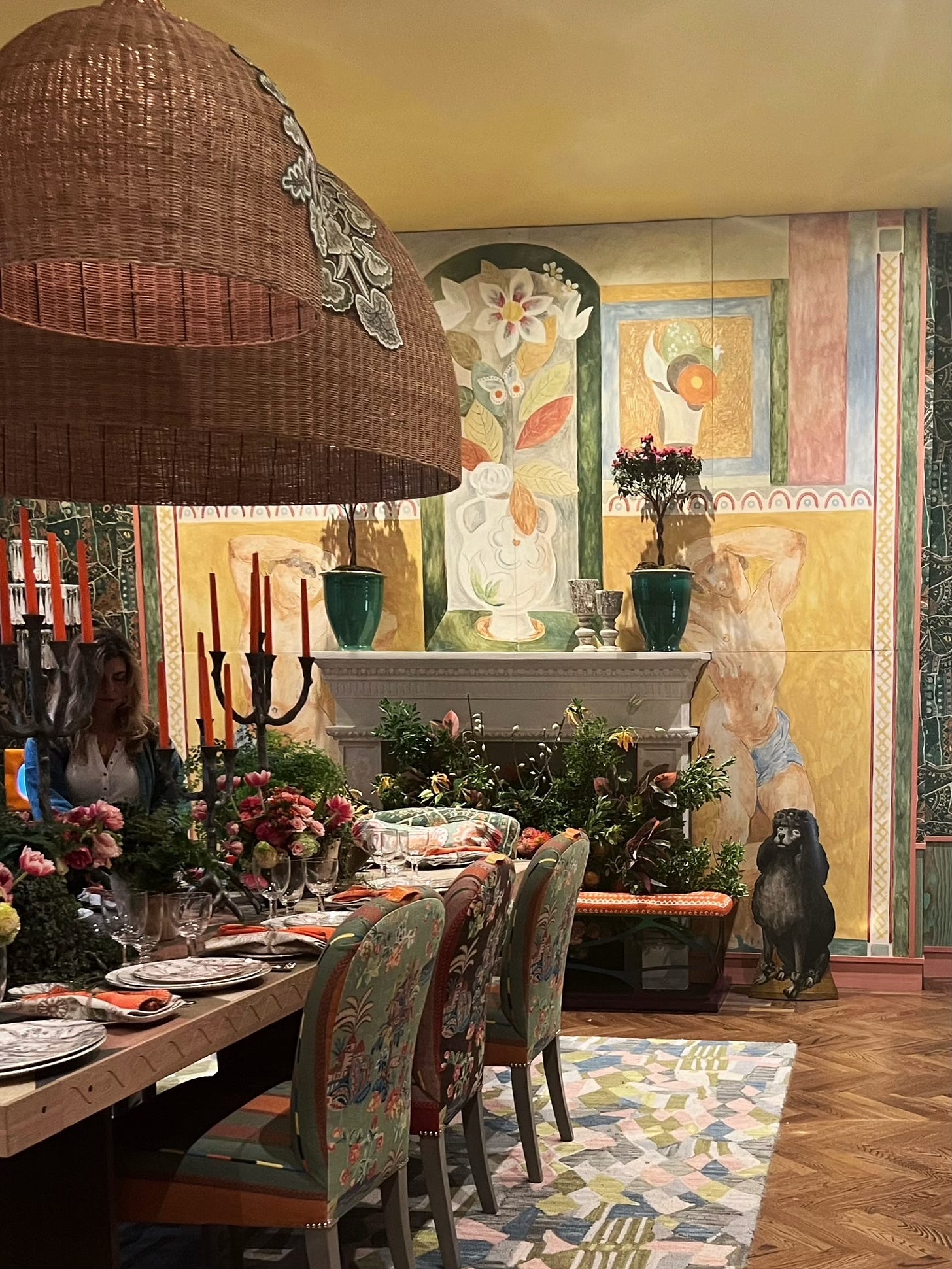
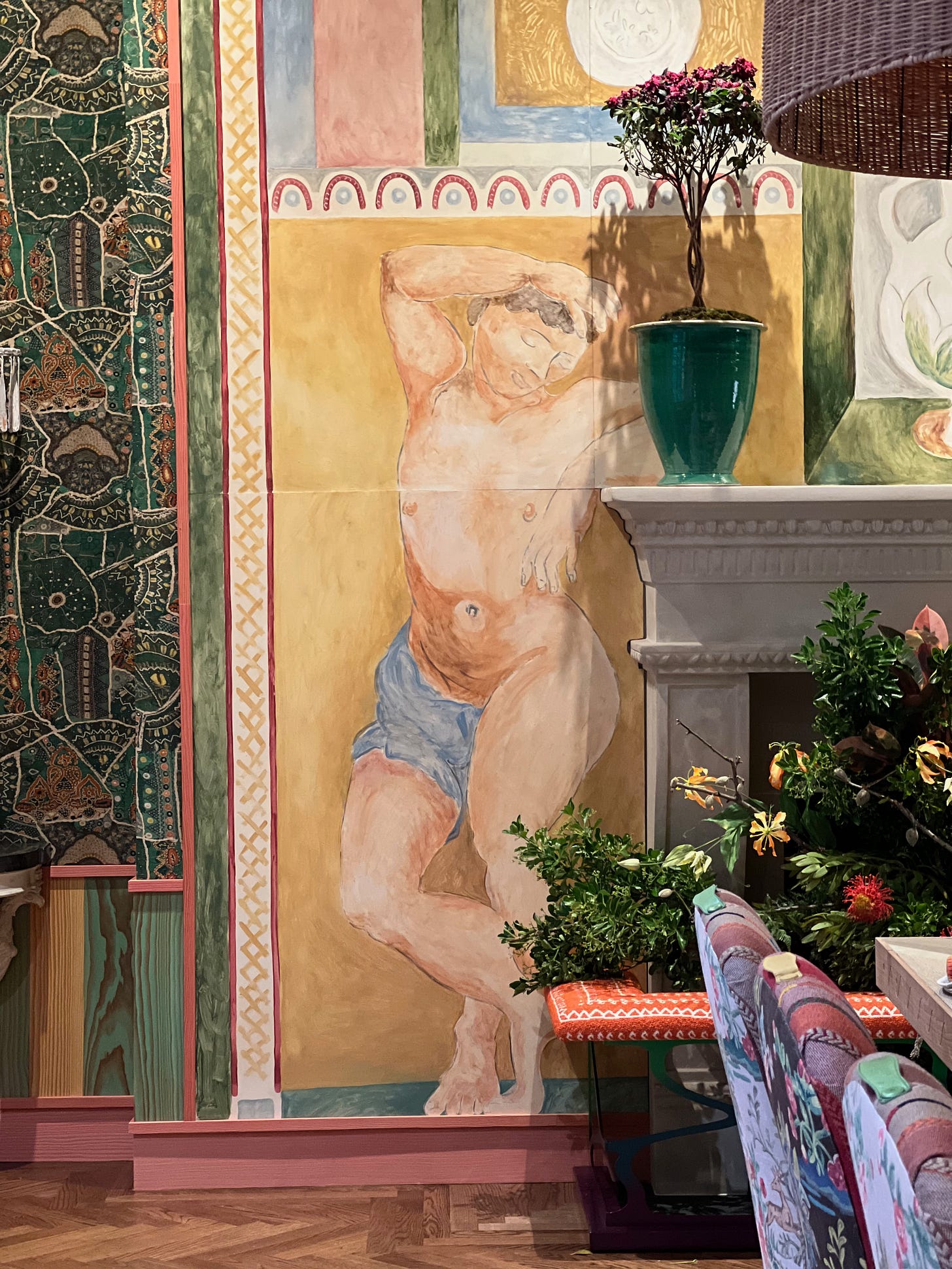
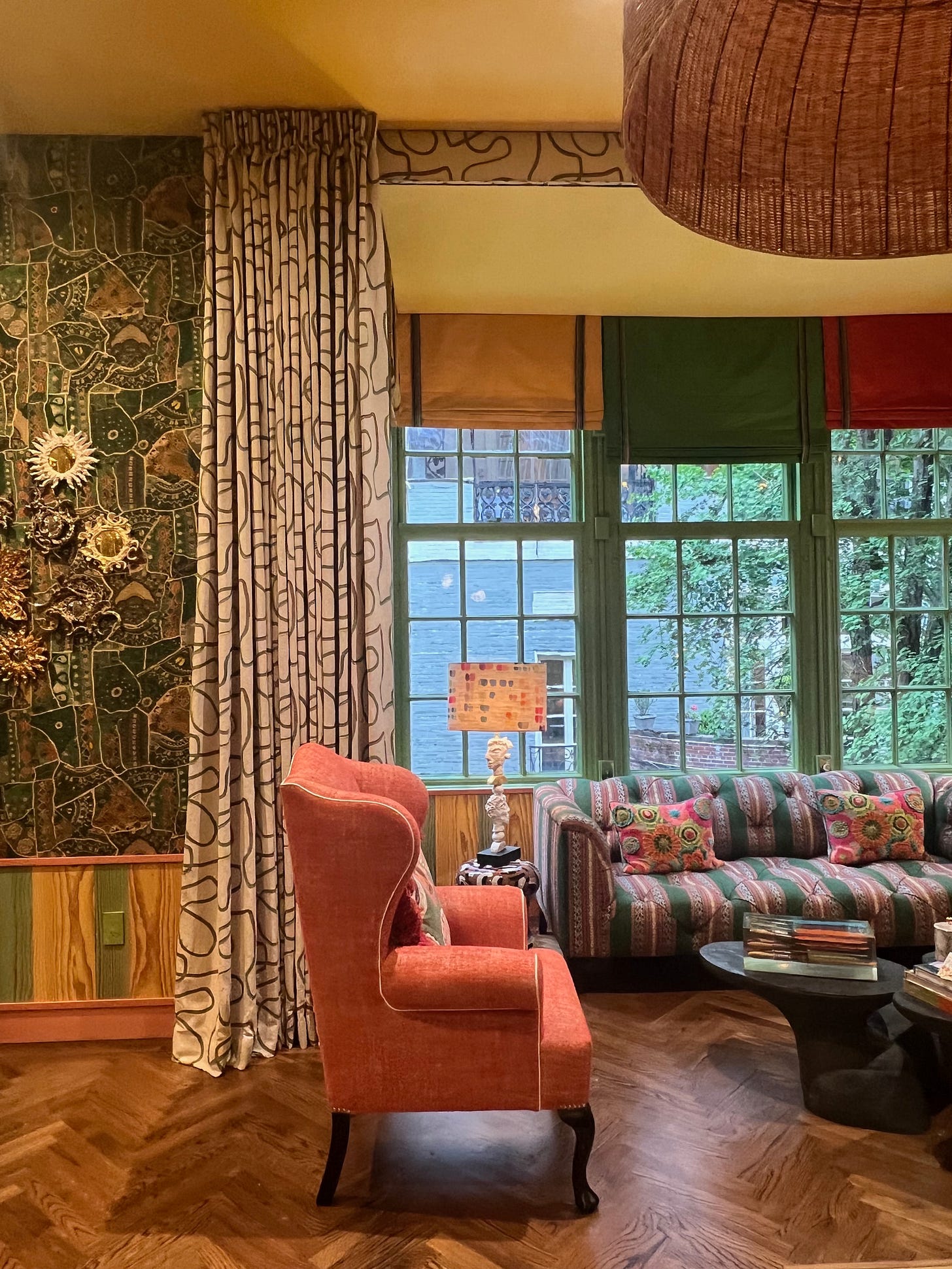
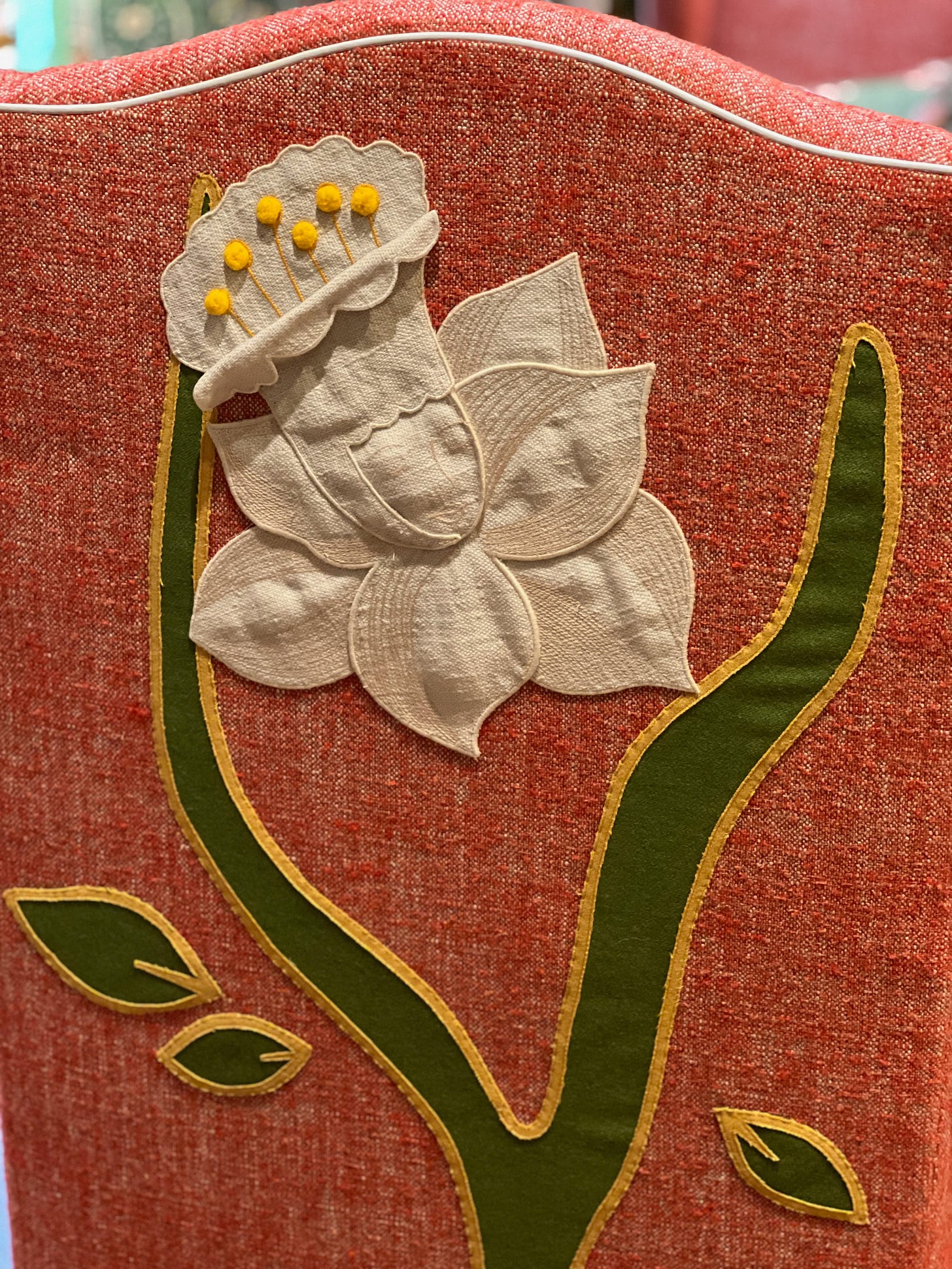

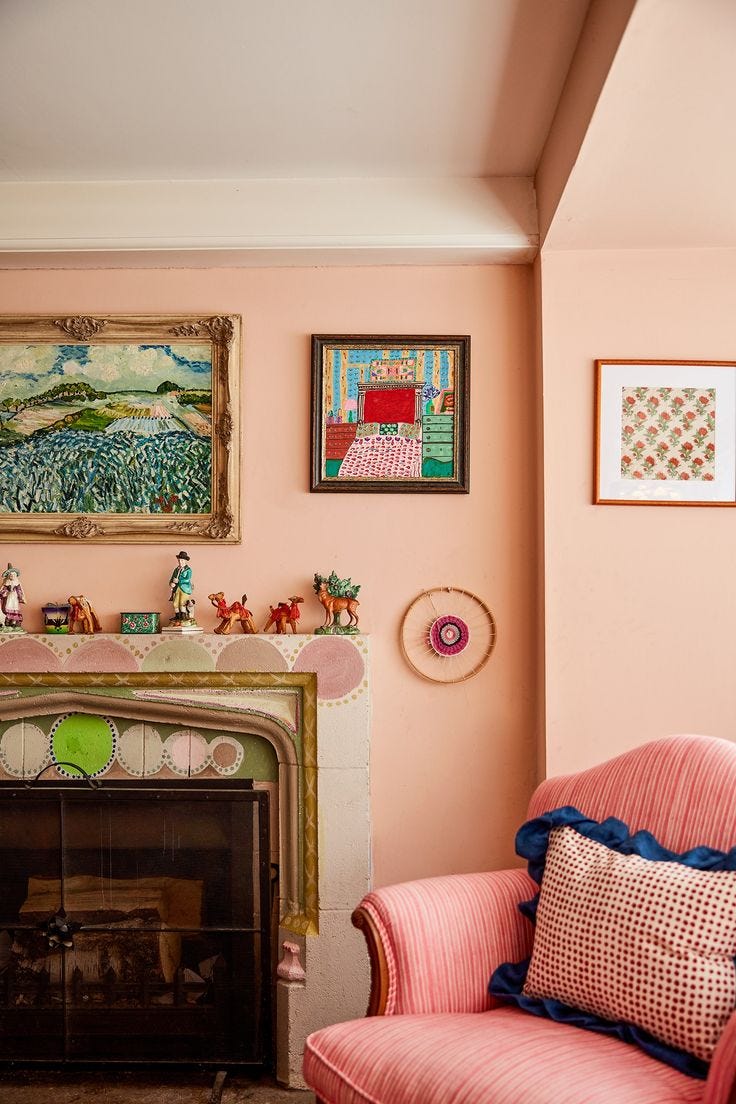

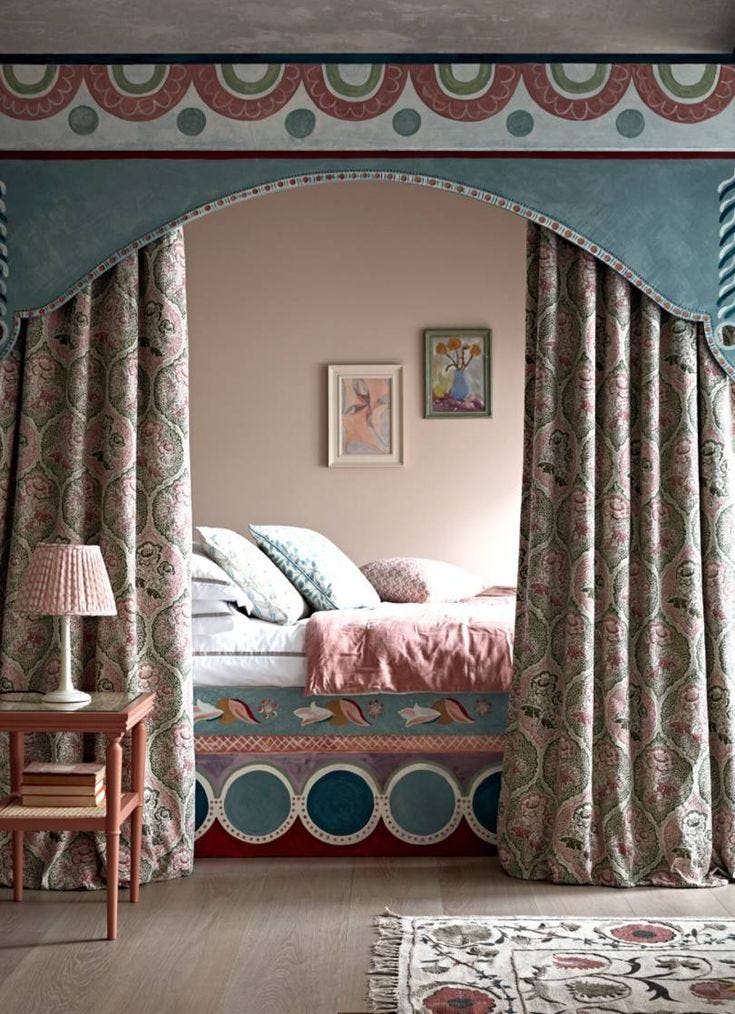
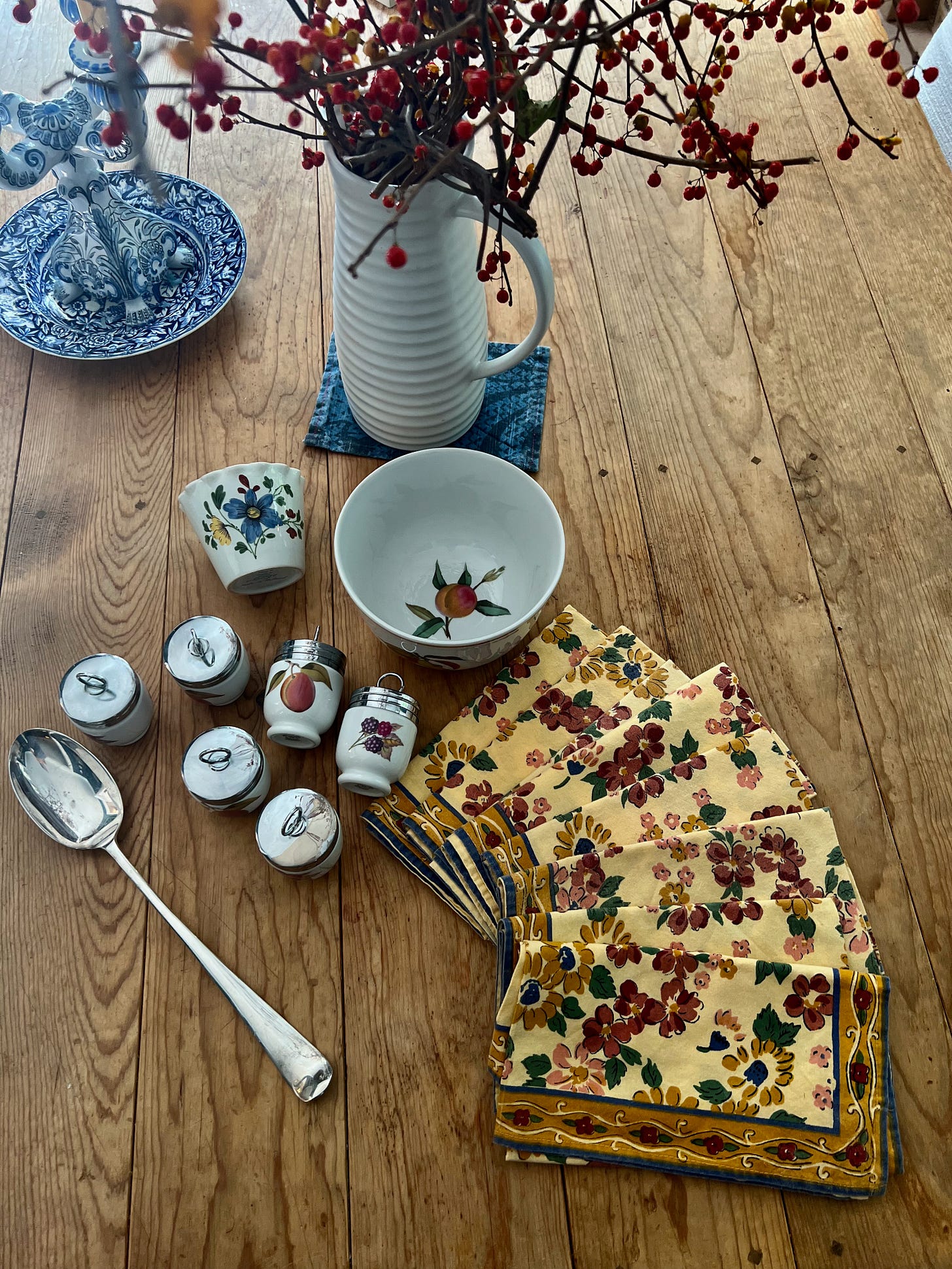
Delightful tour! The level of detailing is astonishing. I am fascinated by the group, their relationships, their view of the world. These handful of people effected an enormous change on post war British art and literature. A set of murals, by Duncan Grant and Vanessa Bell can still be viewed in scholars' quarters at Kings College, Cambridge. I mention that in my current WIP, the sequel to The Hesitant Architect.
What a SPACE!